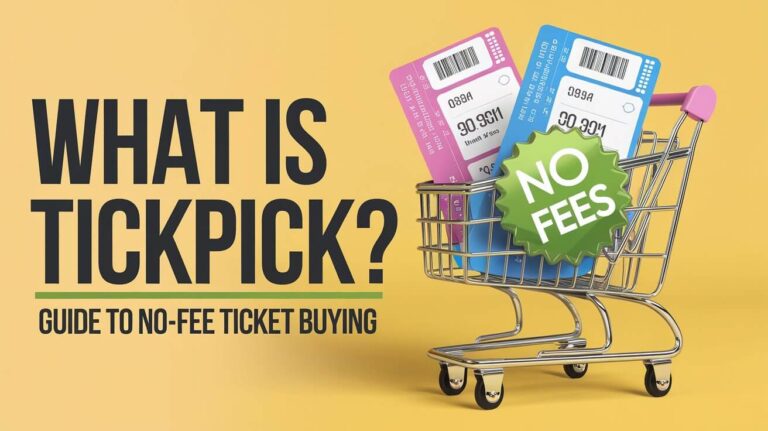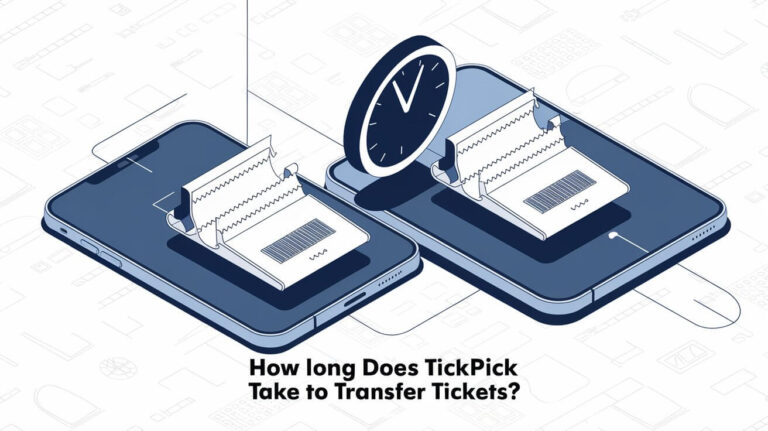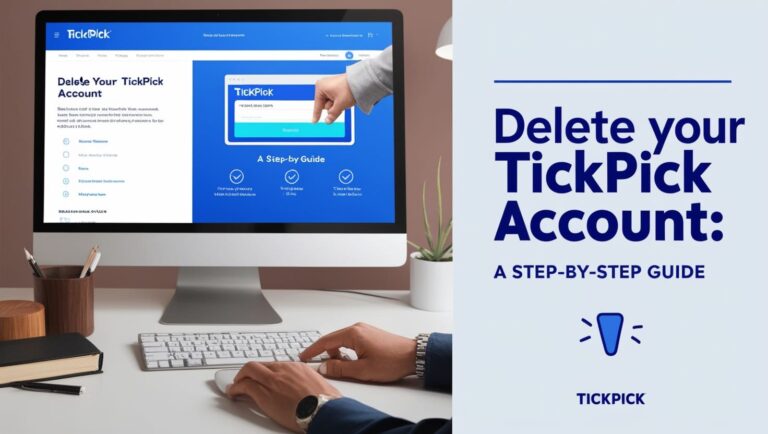How Does TickPick Make Money? A Detailed Revenue Analysis

Overview of TickPick’s Revenue Model
TickPick is a unique player in the secondary ticket marketplace, distinguishing itself with a fee-free approach for buyers. This strategy raises questions about how the platform sustains its operations and profitability. Here’s a detailed look into how TickPick makes money.
Revenue through Seller Commissions
TickPick primarily generates revenue by charging sellers a flat 10% commission on every ticket sold. This is significantly lower than the 25% or more in total fees typically charged by competitors like StubHub and Vivid Seats. By focusing on seller fees, TickPick avoids passing additional costs onto buyers, making it an attractive option for both sellers and buyers.
Strategic Partnerships and Acquisitions
TickPick has formed strategic partnerships with various sports teams, event organizers, and venues to secure exclusive ticket inventories. Notable partnerships include the Firefly Music Festival, the Chicago Sky of the WNBA, and numerous college athletics programs. These partnerships not only expand TickPick’s inventory but also enhance its market presence.
In addition to partnerships, TickPick has grown through acquisitions. In 2018, it acquired RazorGator and Rukkus, which helped increase its ticket inventory and technological capabilities. These acquisitions have been crucial in expanding its market share and improving the overall user experience on its platform.
Advanced Algorithms and Data Insights
TickPick leverages advanced algorithms to optimize ticket pricing and improve the buying experience. Its proprietary “Best Deal Ranking System” grades tickets based on price and seat quality, ensuring buyers get the best value for their money. This system, combined with the platform’s bidding feature, allows users to negotiate prices directly with sellers, making the ticket purchasing process more dynamic and buyer-friendly.
Premium Buyer Services
While TickPick is known for its fee-free model, it also offers premium services for buyers looking for VIP access and additional perks. These services provide an extra revenue stream beyond standard ticket transactions, catering to high-end buyers who seek exclusive experiences at events.
Efficient Cost Management
TickPick maintains a lean operational model, employing around 50 people despite generating tens of millions in annual revenue. This efficient cost management allows TickPick to reinvest in technology and user experience improvements rather than covering high operational expenses.
Marketing and Brand Awareness
TickPick’s growth has been largely driven by strategic marketing and brand awareness campaigns. By highlighting its fee-free model and contrasting it with competitors’ high fees, TickPick has attracted a significant user base. The company also capitalizes on timely events and content marketing, such as leveraging the spike in demand for tickets following viral moments like the Will Smith-Chris Rock incident at the Oscars.
User Experience and Mobile Innovation
TickPick continuously enhances its user experience through regular updates to its mobile app and website. The app, built using modern technologies like React Native, offers a seamless experience with features like Apple Pay integration, personalized deal recommendations, and real-time price tracking. These innovations help retain users and drive mobile sales, which constitute a significant portion of TickPick’s revenue.
Competitive Landscape and Challenges
Despite its innovative approach, TickPick operates in a highly competitive market alongside giants like StubHub, Vivid Seats, SeatGeek, and Ticketmaster. Each of these competitors offers unique features and loyalty programs, posing constant challenges for TickPick to differentiate itself and maintain its market position.
Future Prospects and Market Trends
As the secondary ticket market continues to evolve, TickPick’s focus on transparency, lower fees, and technological innovation positions it well for future growth. However, the company must continuously adapt to market trends and consumer preferences to sustain its competitive edge.
Founding Story of TickPick
TickPick was founded in 2011 by Brett Goldberg and Chris O’Brien, who met while studying at Lehigh University. The inspiration for TickPick came from Goldberg’s experience of reselling concert tickets for a profit after friends canceled last minute. This sparked the idea of a platform that could optimize ticket pricing through a bidding system, eliminating the high fees associated with other marketplaces.
Growth and Development
Since its inception, TickPick has grown rapidly. Initially bootstrapped, the company focused on profitability from day one. Early marketing efforts included content creation and public criticism of competitors’ high fees, which helped attract users. By 2016, TickPick had landed on Inc.com’s list of the fastest-growing companies.
Technology and Innovation
TickPick’s platform is built on sophisticated technology. The “Best Deal Ranking System” uses algorithms to rank tickets based on value, considering both price and seat quality. This system helps users find the best deals quickly. Additionally, TickPick’s mobile app offers features like Apple Pay integration and personalized deal recommendations, enhancing the user experience.
User Benefits
TickPick’s fee-free model offers several benefits for users:
- Transparent Pricing: The price displayed is the final price, with no hidden fees.
- Best Deal Ranking: Users can easily find the best value tickets.
- Bidding System: Allows buyers to negotiate prices with sellers.
- Mobile Accessibility: The app provides a seamless, user-friendly experience.
Competitive Advantages
TickPick stands out in the crowded secondary ticket market due to its unique selling points:
- Lower Seller Fees: Attracts more sellers, increasing ticket inventory.
- No Buyer Fees: Makes it a cost-effective choice for buyers.
- Advanced Technology: Enhances the buying and selling experience.
- Strategic Partnerships: Secures exclusive ticket inventories.
Challenges and Competition
Despite its advantages, TickPick faces stiff competition from established players like StubHub and Ticketmaster. These competitors offer features like loyalty programs and exclusive deals, requiring TickPick to continuously innovate to stay ahead.
Customer Experience
TickPick prioritizes customer satisfaction. Its transparent pricing model, combined with features like the BuyerTrust Guarantee, ensures users receive valid tickets without hidden costs. The platform’s user-friendly design and mobile app further enhance the overall customer experience.
Impact of the COVID-19 Pandemic
The COVID-19 pandemic significantly impacted the live events industry, including TickPick. However, the company’s early focus on profitability and efficient cost management helped it navigate the downturn. As live events resume, TickPick is well-positioned to continue its growth trajectory.
Conclusion
In summary, TickPick’s business model is built on a foundation of transparency, lower fees, and technological innovation. By charging sellers a flat commission, forming strategic partnerships, and continuously improving its platform, TickPick has established itself as a major player in the secondary ticket marketplace. Despite facing competition, its unique approach and commitment to customer satisfaction position it for sustained success in the evolving market.






